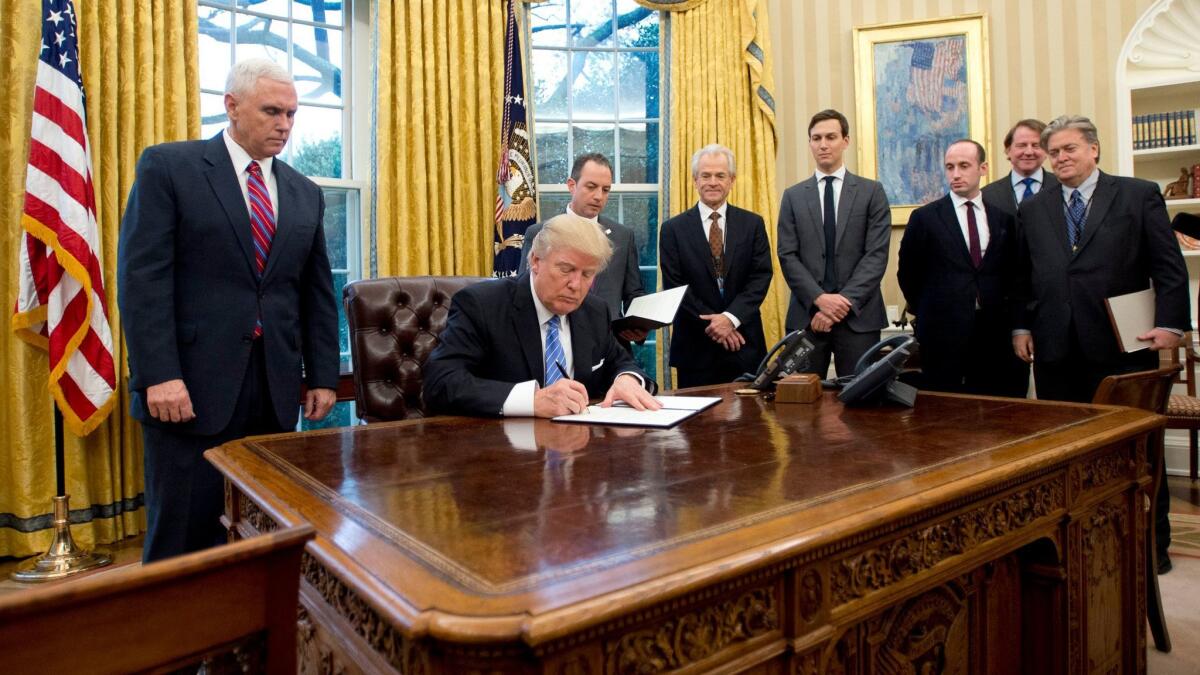Editorial: The TPP is dead, but don’t bury it yet

- Share via
As he promised repeatedly during the campaign, President Donald Trump formally and permanently withdrew the United States Monday from the Trans-Pacific Partnership, a free-trade deal with 11 other countries that President Obama had championed. The move came as no surprise; the TPP had become so politically toxic, there was no realistic chance of it being approved by Congress. Nevertheless, the principles behind it — that the United States will be better off if global trade rules are closer to our own laws, and that increasing trade encourages economic growth — remain vitally important. And the geopolitical rationale is just as strong. The new president shouldn’t lose sight of any of those issues as he moves ahead on trade.
In the executive order he signed Monday, Trump declared his intention not to pursue multilateral trade deals. Instead, his administration will conduct trade talks “directly with individual countries on a one-on-one (or bilateral) basis” in pursuit of better outcomes for American workers. (Separately, the administration is expected to seek to renegotiate the North American Free Trade Agreement with Canada and Mexico.) It will need to hop to it, then, if it’s going to replicate the benefits of the planned free-trade pact with Europe or the pending 50-country Trade in Services Agreement.
It’s certainly simpler to reach agreements with trading partners one at a time, particularly when dealing with countries eager to export more of their goods into this country. But adopting different sets of rules for each trading partner creates a crazy quilt that makes it harder for U.S. businesses to operate globally. More important, it will slow efforts to move the rest of the world toward U.S. standards for wage and hour rules, environmental protection and other factors that humanize commerce but drive up costs for companies here. Meanwhile, abandoning TPP will only increase China’s influence over Asian economies while gutting U.S. credibility as a leader on trade.
Just what makes a trade deal bad in Trump’s eyes isn’t clear; he evidently blames some unidentified feature of the biggest ones for the decline in U.S. manufacturing jobs and the rise in imported goods, particularly from Mexico and China. But those phenomena are driven mainly by the forces of globalism and automation, not the lowering of already low U.S. tariffs. The point behind major trade deals is to try to manage those forces, leveling the global playing field in a way that works for all the parties involved. The Trump administration may not be able to achieve those ends one country at a time. Rather than walking away from our Asian trading partners, Trump should come back with a counterproposal that advances U.S. interests across the region.
Follow the Opinion section on Twitter @latimesopinion and Facebook
More to Read
A cure for the common opinion
Get thought-provoking perspectives with our weekly newsletter.
You may occasionally receive promotional content from the Los Angeles Times.









